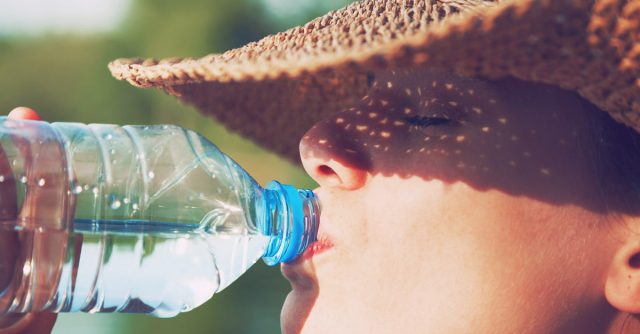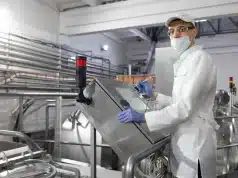There is one water brand that is so popular in San Francisco that it is usually out of stock. It seems that the latest trend is drinking “raw water” – unsterilized, untreated, and unfiltered spring water.
It is marketed by the company called “Live Water” and it costs $36.99 a bottle or $14.99 per refill.
Kevin Freeman, the shift manager at the Rainbow Grocery store, says that this kind of water is mildly sweet and leaves a nice and smooth feeling in the mouth. Moreover, he adds that bottled water is a part of history because in his country people are now looking for ways to eliminate the water grid.
The adherents share the added fluoride, the wariness of tap water, and the lead pipes through which some of it passes. They all agree that wrong filtration type can remove the beneficial minerals.
They even treat the traditional bottled spring water with ozone gas or ultraviolet light to remove the algae in it that according to them kills the “probiotics” (the healthy bacteria) in the raw water.
This quest for pure, raw water is not new. People have been collecting rainwater and drinking from natural springs since forever. But, the crusade against the added fluoride to public water started in the 1950s when Americans saw the danger behind the measures used for protecting the population from contamination and disease.
Namely, fluoride is known for its toxicity in high amounts, but in small percentages, they are reportedly good in the prevention of tooth decay. Arguably, the fact that people today have increased access to fluoride compared to the time when the 1ppm of fluoride was set as a standard.
It is mainly because of the fluoride that people decide to switch to untreated water. However, as TIME reports, Vince Hill, chief of the CDC’s Waterborne Disease Prevention Branch, warns against this idea.
“When water isn’t treated, it can contain chemicals and germs that can make us sick or cause disease outbreaks,” he says. “Anything you can think of can be in untreated water, really,” ranging from agricultural runoff and naturally occurring chemicals to bacteria and viruses.
The main reason behind water treatment is not to add fluoride in the water, but more importantly to remove 91 different contaminants. “That’s the part that is concerning because there are many sources of water contamination that can affect spring water,” Hill says.
As for the fluoride, Vincent Casey, a senior water sanitation, and hygiene manager at clean water nonprofit WaterAid, tells TIMES that the levels of fluoride found in the drinking water are far from hazardous.
“In low quantities, it is scientifically proven that it is beneficial to dental health,” Casey says. “If a water company or a utility is carrying out its treatment to the right standards, there shouldn’t be instances where these concentrations are going to hazardous levels at all.”
If you feel uncertain about your tap water Hill suggests that it would be better that you invest in a home filtration or testing system than turn to untreated water.
It’s a fact that having access to treated water is a luxury not many possess, and that investing in adjusting it to your preference is safer than drinking water that may turn out to cause you problems.
However, the case of drinking untreated water is one that many countries have accepted. A typical example is the mineral springs in Sofia, Bulgaria, which are located at the center of the capital, and from which a lot of Sofians are drinking water every day.
These springs, however, have been tested for properties and bacteria and have been deemed safe to drink from. So, if you decide to drink untreated water, make sure you know where you’re getting your water from.
SOURCES:
HTTPS://WWW.NYTIMES.COM/2017/12/29/DINING/RAW-WATER-UNFILTERED.HTML
HTTP://TIME.COM/5085792/IS-RAW-WATER-SAFE/
HTTPS://WWW.LIVESCIENCE.COM/37123-FLUORIDATION.HTML





